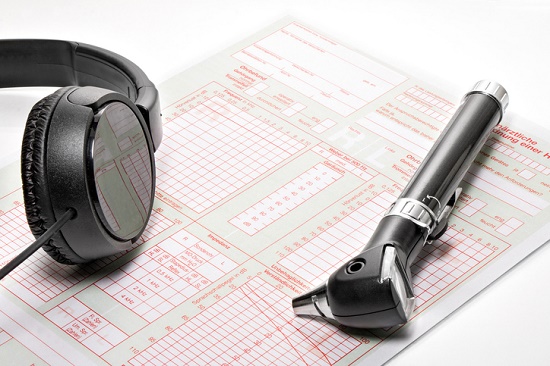
The hearing exam truly is the easy part. The tricky part is acknowledging your hearing loss and actually scheduling the hearing test in the first place.
You’ve probably read the statistics by now: 48 million individuals in the United States have hearing loss but only a minor fraction actually do something about it, and only 20 percent of people who could reap benefits from hearing aids actually use them.
So if you’ve already scheduled your hearing test, great job, you’ve already overcome the biggest barrier to better hearing.
The hearing exam, as you’ll witness, is a simple and easy, non-invasive process that will determine the magnitude of your hearing loss to help determine the most appropriate treatment course.
Shortly after you initially arrive at the office, you’ll begin by completing some paperwork. Then, you’ll consult with your hearing care professional to talk about your hearing health history.
Your Hearing Health History
Your hearing loss, if present, can be triggered by exposure to loud noise, the normal aging process, or by an underlying condition. You’ll want to exclude any underlying conditions before moving on to the actual hearing exam.
If you have an earwax impaction, for example, you may very well be hearing better within a few minutes after a professional cleaning. The existence of any other conditions will be considered and the applicable referral made, if necessary.
After a review of your basic medical history, you’ll go over your subjection to loud sounds, your hearing loss symptoms, and what you would like to accomplish with better hearing.
It’s crucial to establish potential causes, how symptoms are adversely affective your life, and how better hearing will enhance your life, which is after all the whole point. Be suspicious of the practitioner that doesn’t seem to really care about the main reasons why you want to enhance your hearing to begin with.
Testing Your Hearing
There’s one more step before starting the hearing test: the visual examination of the ear with an instrument called an otoscope. This will help rule out any issues with the ear canal, the eardrum, or the excess accumulation of earwax.
Next, you’ll be accompanied to a sound-treated room with your hearing care provider. You’ll be instructed to wear headphones, and the provider will begin to play you some sounds.
You will be presented with a variety of sounds at different frequencies, and you’ll be requested to identify the quietest sounds you can hear at each pitch. This is referred to as your hearing threshold, and the hearing care provider will document these values on a graph known as an audiogram.
The hearing exam might also entail speech testing, where you’ll be asked to repeat the words delivered to you. Various types of words, delivered at different volumes with and without background noise, will be introduced. This will help ascertain if hearing aids can assist you with speech understanding.
When the hearing test is finished, your hearing care provider will discuss the results with you.
Assessing Your Hearing Test Results
Referring to your audiogram, your hearing care provider will now talk about your hearing in both ears. Contingent on the results, your hearing will be categorized as normal or as exhibiting mild, moderate, severe, or profound hearing loss.
If a hearing loss is present, the next move is talking about your treatment options. Since there are no current medical or surgical treatments to restore hearing damage, this means examining your hearing aid options.
Present hearing aids come in a vast array of shapes, sizes, and colors, at a variety of price ranges with several sophisticated features. In selecting your hearing aids, it’s important to work with a competent hearing care professional for three reasons:
- They can help you identify the ideal hearing aid model to satisfy all of your objectives.
- They can help you identify the advanced functions you need—along with the ones you don’t—at a price tag that suits your budget.
- They can program your new hearing aids to enhance only the sounds you have difficulty hearing—ascertained by the hearing test—ensuring the best possible sound quality.
And that’s it, a quick, easy procedure in return for a lifetime of healthier hearing. We’d say that’s a very good deal.
We look forward to seeing you!

